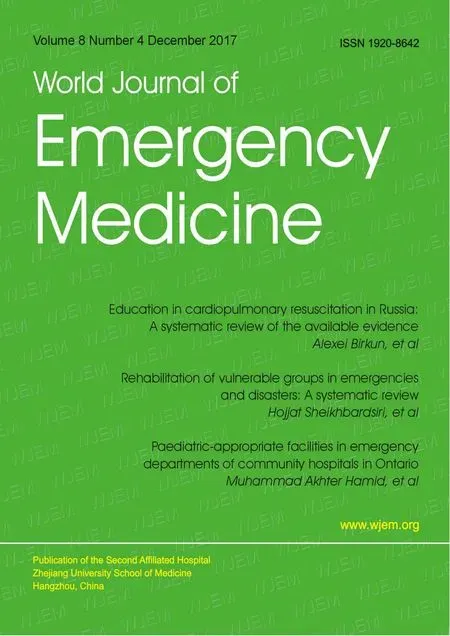Paradoxical brain embolism followed by percutaneous atrial septal closure: Stroke in a patient's thirties highlighting some issues surrounding brain stroke in an emergency setting
Daisuke Matsubara, Koichi Kataoka, Teppei Matsubara, Takaomi Minami, Takanori Yamagata
1 Department of Pediatrics, Jichi Medical University, Tochigi, Japan
2 Department of Clinical Neurophysiology, Neurological Institute, Graduate School of Medical Sciences, Kyushu University,Fukuoka, Japan
Case Letter
Paradoxical brain embolism followed by percutaneous atrial septal closure: Stroke in a patient's thirties highlighting some issues surrounding brain stroke in an emergency setting
Daisuke Matsubara1, Koichi Kataoka1, Teppei Matsubara2, Takaomi Minami1, Takanori Yamagata1
1Department of Pediatrics, Jichi Medical University, Tochigi, Japan
2Department of Clinical Neurophysiology, Neurological Institute, Graduate School of Medical Sciences, Kyushu University,Fukuoka, Japan
Dear editor,
Brain stroke in patients younger than 40 deprives society of its work force. Paradoxical brain embolism(PBE) is sometimes responsible. PBE should never be overlooked in emergency settings because its recurrence may be preventable.
Ojaghihaghighi et al[1]concluded that clinical manifestation is helpful in distinguishing stroke types before diagnostic imaging, also stating, "stroke causes excessive healthcare expense", thereby illustrating the importance of clinical manifestations, diagnostic imaging, and social cost. These may be especially true to stroke of young patients: a young PBE patient with an atrial septal defect (ASD), who underwent percutaneous ASD closure.
CASE
A 37-year-old mechanic, with no remarkable history(hypertension/diabetes mellitus) or family history(thrombophilia), was transferred to the emergency unit because of the sudden onset of mild left hemiparesis and dysarthria. Three days previously, his right leg had been injured with resultant subcutaneous hemorrhage/swelling. He continued to work and sweated markedly.His pain prevented him from taking sufficient fl uids. He lifted tires, inevitably leading to a Valsalva-maneuverlike action, and hemiparesis and dysarthria manifested.

Figure 1. Image analysis of this patient. A, B: Brain magnetic resonance imaging 1 hour after symptom onset. High-intensity diffusionweighted image (A) and a low-intensity apparent diffusion coefficient(B) are evident, suggestive of brain infarction in deep white matter in the right frontal centrum semiovale (red dashed circle). C:Transesophageal echocardiography. A small atrial septal defect with shunt fl ow is evident. RA: right atrium, LA: left atrium. D: Shunt fl ow is absent after the deployment of AMPLATZERTM Multi-Fenestrated Septal Occluder "Cribriform" (St. Jude Medical, Minnesota, USA).
Brain magnetic resonance imaging (MRI) revealed a deep white matter lesion in the right frontal centrum semiovale, suggestive of brain infarction (Figure 1A,B). Brain/neck MRI angiography revealed no stenotic lesions. Clinical findings/examination revealed no hypercoagulation state, deep vein thrombosis, pulmonary embolism/arteriovenous-malformation, or arrhythmia(atrial fibrillation/flutter). Transthoracic/transesophageal echocardiography revealed a small ASD (3.4 mm×7.3 mm) with its morphology mimicking a patent foramen ovale (PFO) (Figure 1C). Right-to-left (RL)-shunt became evident with the Valsalva maneuver. We diagnosed him with PBE due to RL-shunt through ASD.Hemiparesis and dysarthria completely disappeared 2 hours after the onset with hydration and antiplatelet administration. After 6 months, with informed consent,percutaneous ASD closure was performed to prevent recurrent stroke.[2]A percutaneously employed septaloccluder occluded the defect and abolished the RL-shunt(Figure 1D). Stroke did not recur.
DISCUSSION
Leg trauma, subcutaneous hemorrhage, and dehydration may have caused thrombus formation possibly around his injured leg. His Valsalva-maneuverlike action may have triggered PBE through ASD.
Although effectiveness of ASD/PFO-closure to prevent PBE recurrence has not been confirmed,[3]a randomized trial showed that percutaneous PFO closure was superior to medical therapy in the prespecifiedper-protocol analysis.[2]Advice to avoid a Valsalvamaneuver-like action is recommended in cardiac-shuntassociated PBE; however, this patient's occupation inevitably necessitated this action, causing RL-shunt at ASD, leading to PBE recurrence. To prevent this,transcatheter ASD closure was performed.
This patient's neurological manifestations resolved,which may make emergency-practitioners feel at ease;however, PBE with ASD/PFO may be hidden. Importantly,stroke occurrence just after Valsalva-maneuver-like action prompted us to perform transesophageal echocardiography,revealing this condition, of which importance Ojaghihaghighi et al[1]did not state. Prompt neurological examinations and diagnostic imaging led to rapid diagnosis and treatment,possibly preventing recurrence and its accompanying social loss. Ojaghihaghighi et al[1]emphasized the importance of neurological manifestation without/before diagnostic imaging.
CONCLUSION
From a little different view point, this case well illustrates the problems accompanying brain stroke, which Ojaghihaghighi et al[1]suggested: clinical manifestation,diagnostic imaging, and social cost, to which emergencymedicine-physicians should pay attention, irrespective of well-/mal-equipped emergency settings.
Funding: None.
Ethical approval: Not needed.
Conflicts of interest: The authors declare there is no competing interest related to the study, authors, other individuals or organizations.
Contributors: Nishimura T proposed the study and wrote the first draft. All authors read and approved the final version of the paper.
1 Ojaghihaghighi S, Vahdati SS, Mikaeilpour A, Ramouz A.Comparison of neurological clinical manifestation in patients with hemorrhagic and ischemic stroke. World J Emerg Med.2017;8:34–8.
2 Carroll JD, Saver JL, Thaler DE, Smalling RW, Berry S,MacDonald LA, et al. Closure of patent foramen ovale versus medical therapy after cryptogenic stroke.. N Engl J Med. 2013;368(12):1092–100.
3 Li J, Liu J, Liu M, Zhang S, Hao Z, Zhang J, et al. Closure versus medical therapy for preventing recurrent stroke in patients with patent foramen ovale and a history of cryptogenic stroke or transient ischemic attack. Cochrane Database Syst Rev. 2015;(9):CD009938.
Daisuke Matsubara, Email: 99081dm@jichi.ac.jp
World J Emerg Med 2017;8(4):308–309
10.5847/wjem.j.1920–8642.2017.04.012
March 20, 2017
Accepted after revision August 16, 2017
 World journal of emergency medicine2017年4期
World journal of emergency medicine2017年4期
- World journal of emergency medicine的其它文章
- Instructions for Authors
- Case of morphine-induced ventricular fibrillation
- Vulvar inflammation as a manifestation of Crohn's disease
- Anticholinergic syndrome induced by toxic plants
- The effects of microRNA-34a regulating Notch-1/NF-κB signaling pathway on lipopolysaccharide-induced human umbilical vein endothelial cells
- Procedural simulation: medical student preference and value of three task trainers for ultrasound guided regional anesthesia
